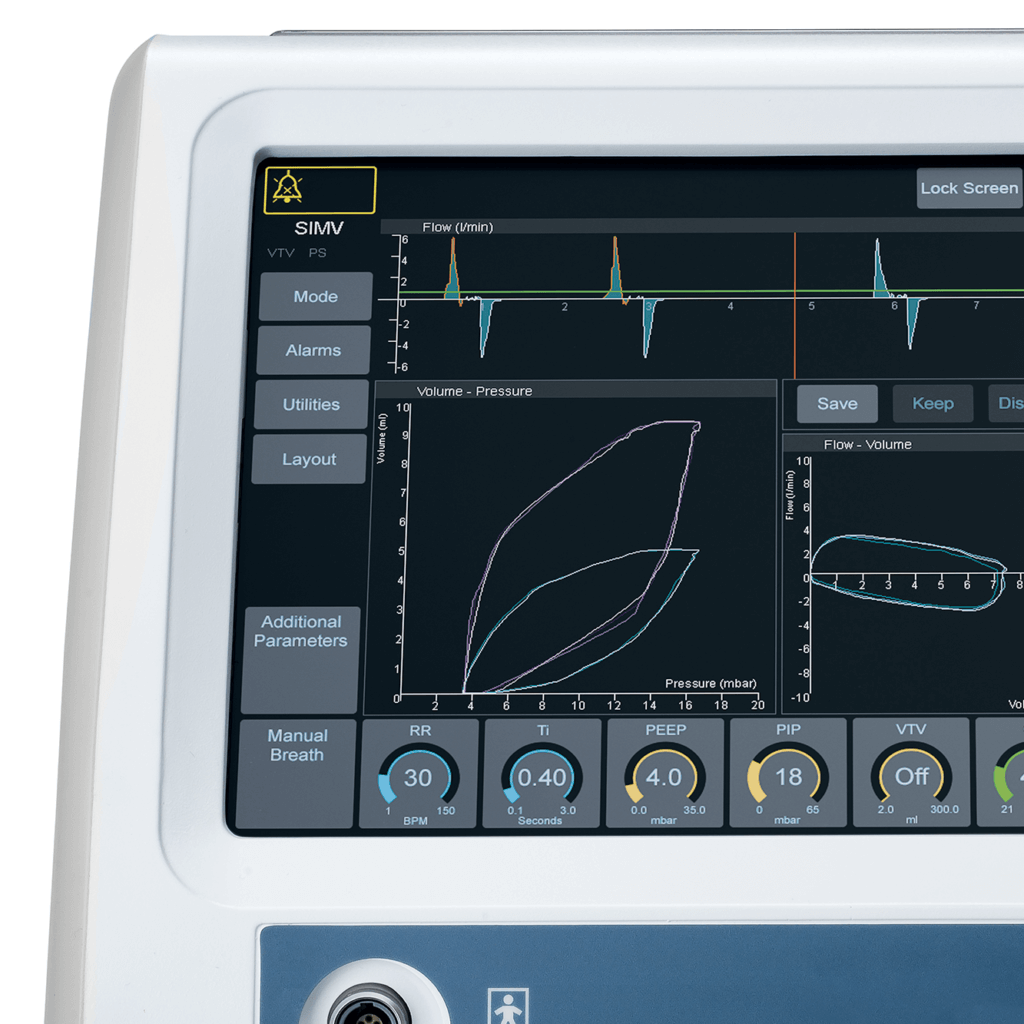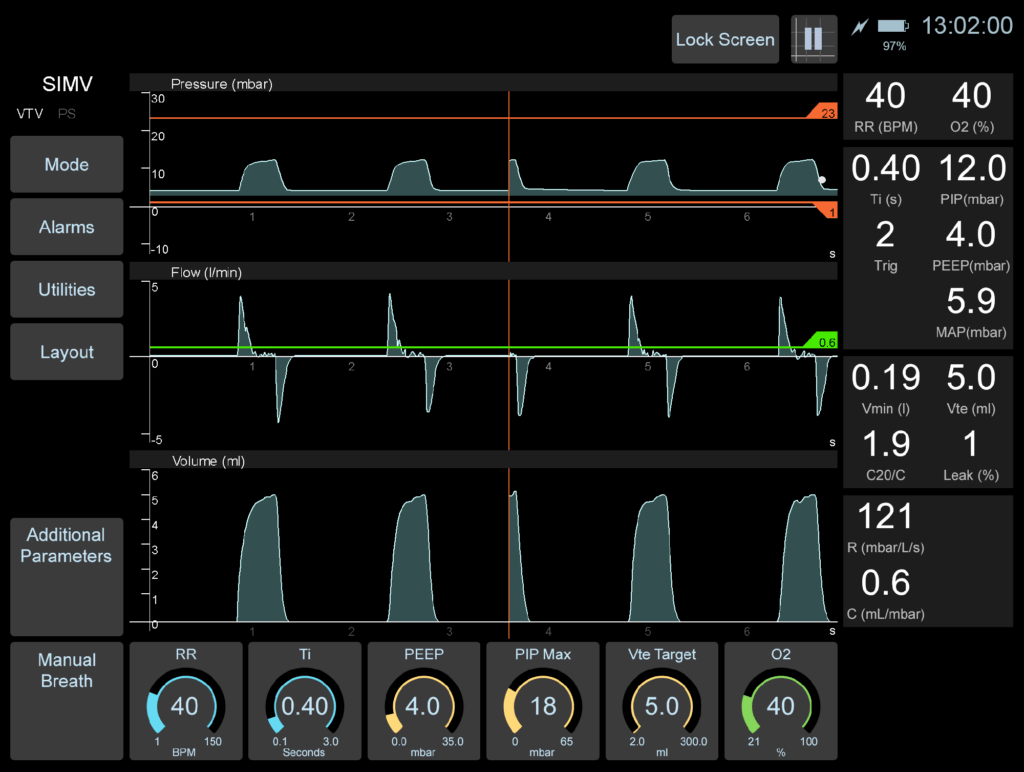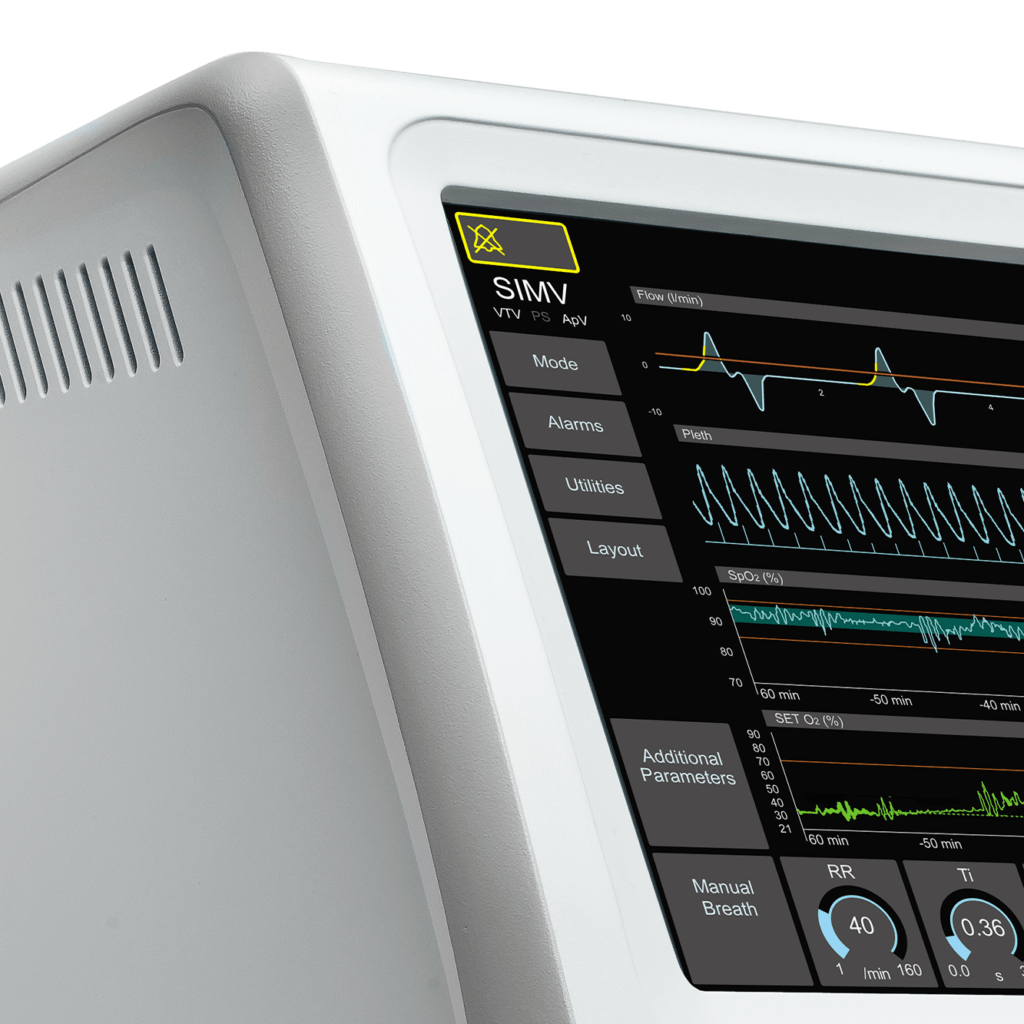Chronic Lung Disease continues to be a legacy of ventilation in premature and term neonates, with volutrauma identified as the single most significant contributing factor. There is evidence to show that monitoring end tidal volumes and maintaining appropriate volumes reduces the risk of Chronic Lung Disease and the incidence of Air Leak Syndrome. This can be achieved by continuously monitoring end tidal volumes and manually adjusting the Peak Inspired Pressure to maintain the appropriate tidal volume – or using the enhancement of VTV, which automates this process.
The VTV software in SLE’s ventilators has been designed to do exactly this, and comparisons with other volume guarantee software have found it to be equally as effective. By using VTV the clinician sets a tidal volume appropriate for the infant, and the Peak Inspired Pressure adjusts in accordance with changes in the lung mechanics. VTV also offers automatic leak compensation of up to 50%.

Benefits of using VTV
- Reduces the risk of Chronic Lung Disease by having stable appropriate tidal volumes
- Reduces the incidence of Air Leak Syndrome
- Stable cerebral blood flow
- Good elimination of CO2
- With stable levels of O2 saturation and CO2 elimination there may be a reduction in the number of blood gases needed
How does it work?
When VTV is on, the user sets the targeted Vte that is appropriate for the patient, as well as the maximum PIP. SLE ventilators measures the Vte of every assisted breath and compare it to the target Vte. If necessary, the algorithm adjusts the delivered PIP, only up to a maximum PIP setting. Therefore, even if there is a change to the lung mechanics, such as change in the resistance and compliance of the lung or a change in the respiratory effort of the patient, the ventilator will ensure that the appropriate PIP is used.


Leak Compensation
In Neonatal patients, it is very common to have gas leak around the ET tube, due to the use of un-cuffed ET tubes. It is therefore very important for the ventilator to be able to compensate for leakage. Our ventilators measure and target the expiratory tidal volume and can automatically compensate for leaks of up to 50%, ensuring that the appropriate tidal volume is achieved.
Education Hub
Online Training
Webinars
Service Training
Clinical Training


